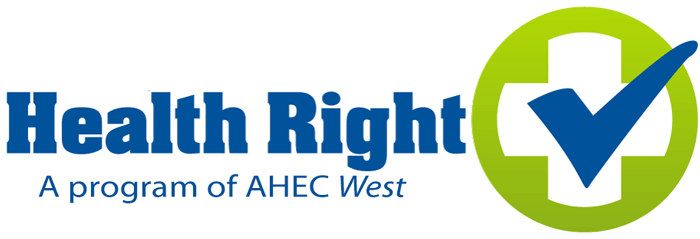Regional Oral Health Pathway
- Need: To address the oral health needs of low-income uninsured and underinsured residents in rural Appalachia.
- Intervention: An oral health education program was implemented in Appalachian Maryland, Pennsylvania, and West Virginia.
- Results: This program increased oral health visits in the area and provided residents with valuable information on oral health resources and services.
Evidence-level
Effective (About evidence-level criteria)Description
The Regional Oral Health Pathway program served Allegany County, Maryland; Garrett County, Maryland; Washington County, Maryland; Mineral County, West Virginia; and Bedford County, Pennsylvania, all of which are greatly affected by multi-generational poverty and have less access to healthcare and dental services than more urbanized areas.

The Regional Oral Health Pathway program was created by Health Right in partnership with the Maryland Area Health Education Center West (AHEC West), Allegany County Health Department, Garrett County Health Department, and Hyndman Area Health Center, to address oral health needs and issues related to neglected oral care in uninsured and underinsured populations.
This program used a Pathways Model, which uses community health workers (CHWs) to connect at-risk patients to community health and social services. The Pathways Model focuses on three critical action points: finding a target population, treating that population, and measuring progress. The Regional Oral Health Pathway program adapted this model to educate members of the target population in oral health self-care and support them in receiving preventive care. This was done through presentations and by providing information on oral health resources to the community.
Throughout the program, primary care providers and health professions students were trained in how to perform oral health screenings during routine physical exams. Dental providers were also recruited into the program, offering services at greatly reduced rates.
This program received support from a 2012-2015 Federal Office of Rural Health Policy (FORHP) Rural Health Care Services Outreach grant.
Services offered
- Outreach and education activities
- Preventive and acute dental treatment
- Leveraging of treatment funds to provide extensive dental care for very little cost
Results
- CHWs reached more than 2,000 consumers and more than 500 staff who serve adults with disabilities, with information on oral health self-care and dental services access.
- Targeted outreach to low-income adults with disabilities resulted in dental treatment referrals for 646 adults with disabilities and 183 caregivers.
In addition, the program:
- Provided 4,813 urgent dental treatment visits to date and $3,004,135 worth of dental care to those in need
- Lowered treatment costs by paying a flat hourly rate of $150, resulting in an 80% reduction in actual value of care
- Reduced emergency department visits by 16%
- Trained 78 primary care providers and 76 health professions students in how to perform oral health screenings during routine physical exams
- Recruited and maintained 25 dental providers as part of the network
- Increased number of low-income adults receiving urgent dental treatment from 177 to 2,488
Read more about Regional Oral Health Pathway in the RHIhub Rural Monitor article Community Health Workers Get Trained to Reduce Oral Health Disparities.
For more information about program results:
Rowland, S., Leider, J.P., Davidson, C., Brady, J., & Knudson, A. (2016). Impact of a Community Dental Access Program on Emergency Dental Admissions in Rural Maryland. American Journal of Public Health, 106(12), 2165-2170.
Challenges
Challenges faced by the program included:
- Changes in personnel
- Deviation taken from the original plan
- Partners experiencing financial and personnel difficulties of their own
- Changes in funding levels severely restricting the program's impact
Replication
In order to create a similar program, it is important to:
- Try new models of working together
- Collaborate in ways that maximize the benefit to the community
- Work with partners to adapt billing practices to accommodate low-income individuals
- Utilize existing community providers, including FQHCs, health departments, and private practices
Contact Information
Susan Stewart, Executive DirectorAHEC West
301.777.9150
susan.stewart@ahecwest.org
Topics
Access
Appalachia
Community health workers
Oral health
People with disabilities
Wellness, health promotion, and disease prevention
States served
Maryland, Pennsylvania, West Virginia
Date added
September 2, 2015
Date updated or reviewed
August 2, 2023
Suggested citation: Rural Health Information Hub, 2023. Regional Oral Health Pathway [online]. Rural Health Information Hub. Available at: https://www.ruralhealthinfo.org/project-examples/815 [Accessed 19 April 2024]
Please contact the models and innovations contact directly for the most complete and current information about this program. Summaries of models and innovations are provided by RHIhub for your convenience. The programs described are not endorsed by RHIhub or by the Federal Office of Rural Health Policy. Each rural community should consider whether a particular project or approach is a good match for their community’s needs and capacity. While it is sometimes possible to adapt program components to match your resources, keep in mind that changes to the program design may impact results.
